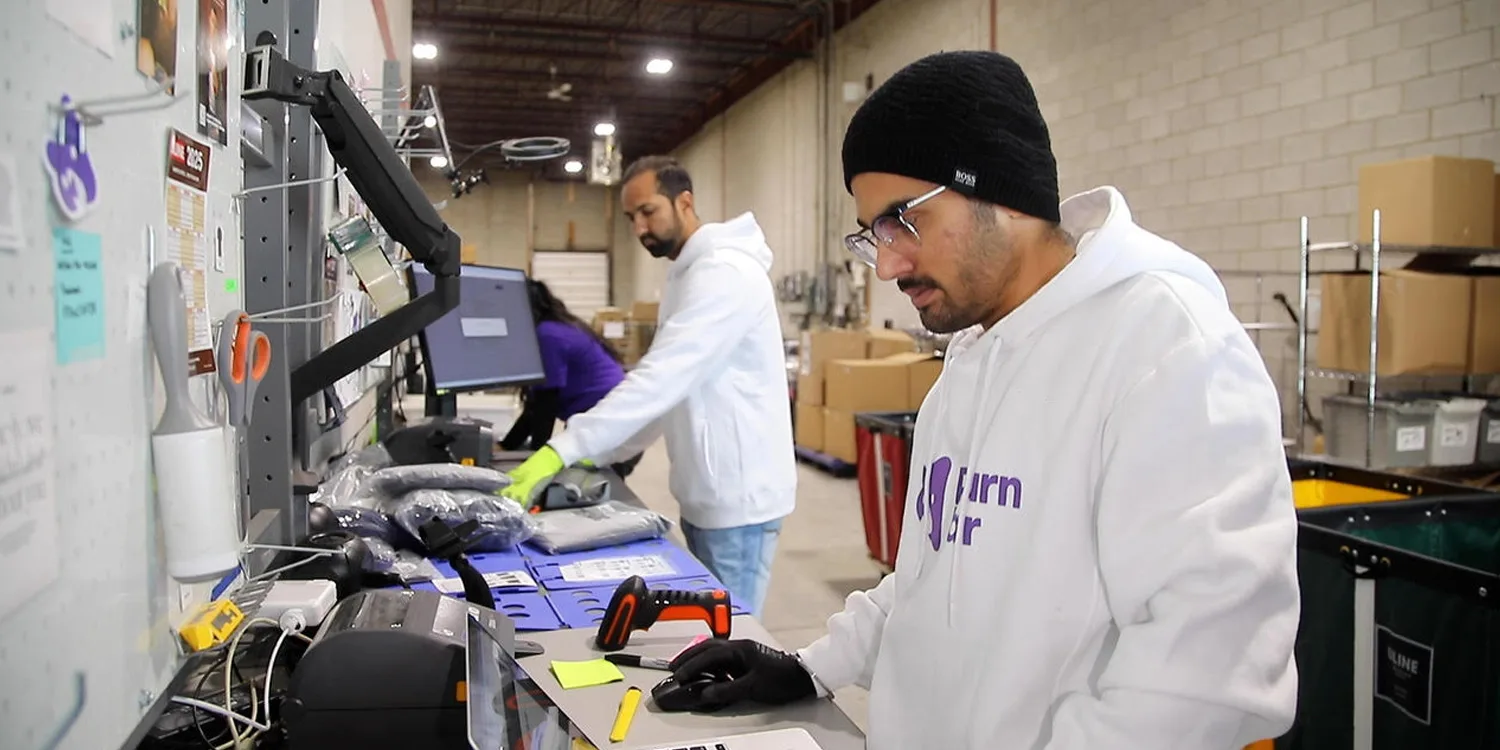Made in Canada: ReturnBear is streamlining the online returns process despite trade turmoil
By Dominique Ritter | October 14, 2025

The Toronto startup is tackling the crisis in online returns by providing a service to cut costs, reduce environmental impact and satisfy demanding customers — at a time of shifting tariffs and geopolitical strife.
In this series, we explore how Canadian businesses are contending with global trade disruption.
There are things we want and things we don’t want. Then there are things we wanted, ordered online, decided no, thank you! and unceremoniously returned to sender.
And that’s why we have a returns problem that cost retailers U.S.$890 billion last year and is contributing up to 24 million metric tonnes of greenhouse gas emissions annually. When you factor in returns fraud and all the items that end up being trashed, the problem is even worse. In 2022, merchants sent more than 4.3 billion kilograms of products to landfills.
“Returns are a giant problem right now,” says Sylvia Ng, CEO of ReturnBear, a Toronto company that’s reinventing the online returns process. While trade disruptions are making things even more complicated, their solution to this dynamic global dilemma aims to dramatically reduce waste, fraud and emissions.
Here, Ng discusses problematic shopping behaviours, the logistics of navigating tariffs and how their company is providing many happy — and environmentally sound — returns.

Ex-Shopify GM Sylvia Ng became CEO of ReturnBear in 2021
How did this problem get so big?
There are a few key factors. One is bracket buying, which is buying multiple sizes of the same item in order to try them on and then return the ones that don’t fit. The other is wardrobing, which is popular among younger generations. It’s buying something, wearing it with the tag on and then returning it.
Those two things, along with Amazon making returns really easy, have led to an all-time high return rate. A lot of the merchants are experiencing 25 to 35 percent return rates. In some cases, as high as 50 percent. It has been increasing over the last few years.
That’s why ReturnBear exists. We’re trying to do three things: make the consumer experience better, lower the cost for the retailers and lower the environmental cost of this whole returns situation.
How does that work?
We have local logistics networks in Canada, the U.S., the U.K. and Australia where we take in and refund returned items. Instead of a product having to go back to a centralized warehouse [abroad], we store it locally until the next customer buys it and we send it to them. That way, the costs are reduced somewhere between 30 to 70 percent and the emissions are lowered somewhere between 40 to 90 percent. The consumer is a lot happier because they don’t have to wait for a refund.
How is the tariff turmoil affecting your business?
A return was expensive to begin with — somewhere around U.S.$30. Tariffs have made it even more expensive. We work with fashion merchants who are now rethinking their supply chains to protect margins. With duties rising on many products, the pressure is higher than ever to recover returned inventory quickly and cost-effectively.
The need for a solution like ReturnBear has gone way up, but on the flip side, because the tariff changes have been erratic, it’s been hard to land on an operational solution that is optimal because the landscape keeps changing.
Supply chain changes don’t happen overnight. It’s not software. You need to actually operationally change things in countries with localized teams, laws, taxes, et cetera.
Have you changed your approach to weather these times?
In the last six months, we have found we need more patience, need to be flexible and to plan for unknowns. All these tariffs have made us anticipate that changes will happen. Trump will continue to change tariffs with various countries, and with that, merchants will need to adapt their supply chains to reduce the impact of duties on goods. He just got rid of the de minimis [US tariff exemption for low-cost imports] for goods coming into the U.S., and that’s a huge change for the e-commerce industry.
What does the return fraud landscape look like right now and how are you countering it?
Fraud as a market size has hit a crazy number. There are reports now of it being around U.S.$100 billion in North America.
A lot of the fraud takes advantage of disconnected systems. When you have a retailer whose systems for selling online are separate from how they sell brick-and-mortar, it is very easy for a consumer to take advantage.
[Typically,] if you want to return something you bought online, you get a shipping label from the merchant and then you ship that item. Because merchants don’t want the consumers to have to wait for refunds, they said, “Let’s refund this customer when they bring the item to Canada Post.”
That has led to a lot of consumers saying, “Well, no one’s actually checking what’s in the box. I can put anything in the box and still get the refund.” And, because they still have the item, they can walk into a store and [get a second refund].
ReturnBear gives out instant refunds at our local return points across Canada in Staples and Cadillac Fairview malls, where consumers don’t have to package anything and they don’t need a shipping label. We verify that the item is in fact what you’re supposed to return — the right size, the right SKU and that it’s not damaged. The fraud is almost 100 percent curbed.
By verifying the items customers bring to your return points, what kinds of sneaky things are you finding?
Empty bags, bricks, bags of sand.
What kind of environmental impact has ReturnBear achieved?
We keep it local, which makes a huge difference. For example, we’re working with a merchant that dropships [where online sellers ship directly from manufacturer to customer] from China. When they sell into Canada and get returns, we send it to the next local customer for them. That journey to the next local customer is 40 kilometres on average. When you send it back to China, do you know what the average distance is? It’s 10,500 kilometres. We are basically saving 99 percent of transportation emissions.
I did a calculation for that merchant one month when we had around 225 returns. By e-commerce terms, that is a very small number. But it was the equivalent of planting 50,000 trees, waiting for them to grow 20 years and catching carbon over 20 years.
Despite recent market conditions, are you seeing opportunities for growth?
Oh, there’s lots. We have expanded our network to major English-speaking markets, but we’re still leaving a lot of the globe untackled. Global expansion is a huge opportunity and we’re likely going to look at the EU next.
When you shop online, what do you look for in a returns policy?
As a busy mom, I look for convenience. Are you going to make me go very far? What are the [opening] hours? Do I need to print out a shipping label? And will the [return] policy cover what I’m looking at? Oh, and cost, obviously.
I don’t want my purchase to put a burden on the environment. I would like both brands and consumers to think a little bit more about returns. Not just because of the cost but because of the environmental impact.
Find out more about ReturnBear and 1,200 other ventures on on MaRS Connect.
Photos courtesy of ReturnBear
 Dominique Ritter
Dominique Ritter